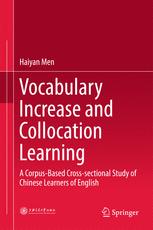

Most ebook files are in PDF format, so you can easily read them using various software such as Foxit Reader or directly on the Google Chrome browser.
Some ebook files are released by publishers in other formats such as .awz, .mobi, .epub, .fb2, etc. You may need to install specific software to read these formats on mobile/PC, such as Calibre.
Please read the tutorial at this link: https://ebookbell.com/faq
We offer FREE conversion to the popular formats you request; however, this may take some time. Therefore, right after payment, please email us, and we will try to provide the service as quickly as possible.
For some exceptional file formats or broken links (if any), please refrain from opening any disputes. Instead, email us first, and we will try to assist within a maximum of 6 hours.
EbookBell Team

4.3
78 reviewsThis book highlights research that expands on our knowledge of second- language collocation acquisition. It presents original findings based on the largest collocation database to date, encompassing over 8,000 collocations: verb + noun, adjective + noun, and noun + noun. These collocations, collected from a one-million-learner corpus, were not confined to English as a foreign language (EFL) learners at a particular proficiency level, but also included learners at three levels. As such, the book provides a panoramic view regarding L2 collocation acquisition, not only in terms of learners’ acquisition of different types of collocations, but in terms of the developmental patterns in L2 collocation learning. One major discovery is that there is a collocation lag as learners’ proficiency levels rise, which is associated with vocabulary increase, in particular semantic domains—a remarkable insight for second-language acquisition researchers, English teachers and EFL learners alike. The findings reported shed new light on how collocations are acquired by EFL learners, offering guidance on how they can best be taught. In closing, the book discusses pedagogical aspects that arise from considering how learners can be helped with collocation learning.